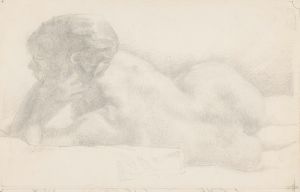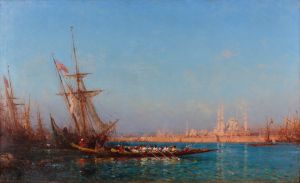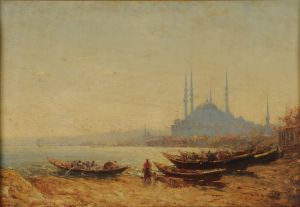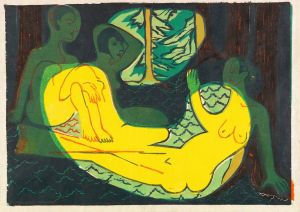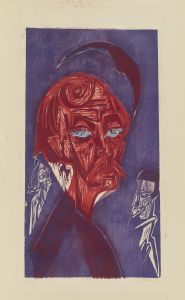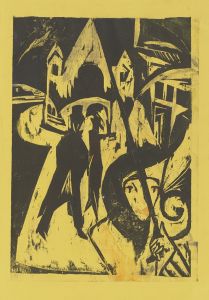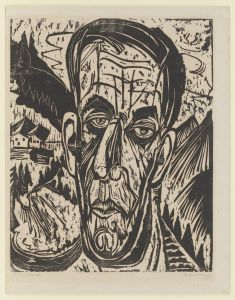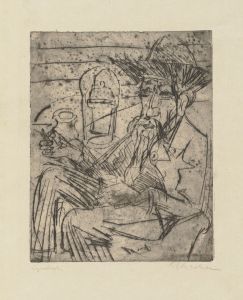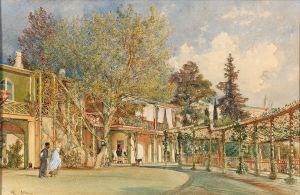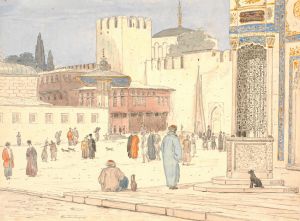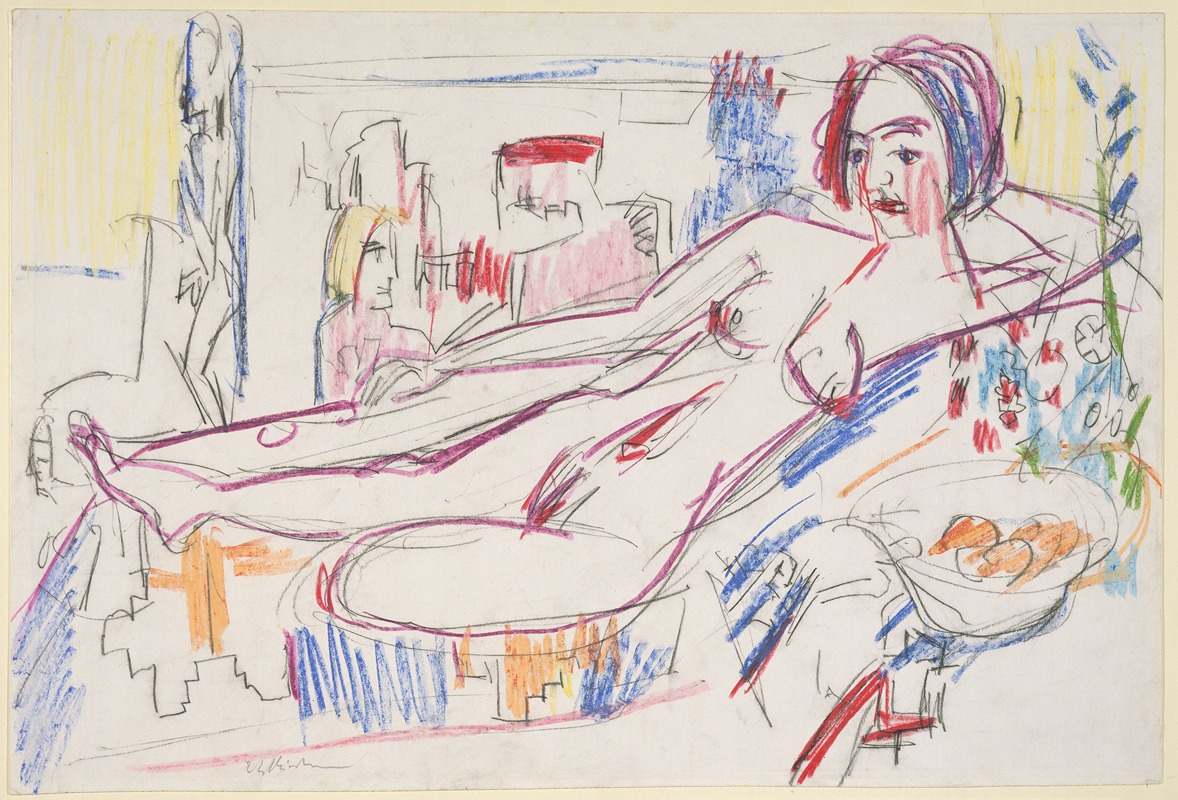
Liegender weiblicher Akt auf einer Ottomane
A hand-painted replica of Ernst Ludwig Kirchner’s masterpiece Liegender weiblicher Akt auf einer Ottomane, meticulously crafted by professional artists to capture the true essence of the original. Each piece is created with museum-quality canvas and rare mineral pigments, carefully painted by experienced artists with delicate brushstrokes and rich, layered colors to perfectly recreate the texture of the original artwork. Unlike machine-printed reproductions, this hand-painted version brings the painting to life, infused with the artist’s emotions and skill in every stroke. Whether for personal collection or home decoration, it instantly elevates the artistic atmosphere of any space.
Ernst Ludwig Kirchner was a prominent German expressionist painter and one of the founding members of the art group Die Brücke (The Bridge), which played a pivotal role in the development of modern art in the early 20th century. Kirchner's work is characterized by its bold use of color, dynamic compositions, and a focus on the human figure, often exploring themes of modernity and the human condition.
"Liegender weiblicher Akt auf einer Ottomane" (Reclining Female Nude on an Ottoman) is one of Kirchner's notable works, exemplifying his expressionist style. Created during a period when Kirchner was deeply engaged with the exploration of the human form, this painting reflects his interest in capturing the essence of his subjects through exaggerated forms and vibrant colors.
The painting depicts a nude female figure reclining on an ottoman, a common motif in Kirchner's oeuvre. The figure is rendered with bold, sweeping brushstrokes and a vivid color palette, typical of Kirchner's expressionist approach. The use of color in this painting is particularly striking, with contrasting hues that create a sense of movement and emotional intensity. The figure's pose is relaxed yet dynamic, conveying a sense of immediacy and presence.
Kirchner's treatment of the human form in this painting is notable for its departure from traditional representations of the nude. Rather than idealizing the figure, Kirchner emphasizes its angularity and the tension in its posture, reflecting his interest in the psychological and emotional dimensions of his subjects. This approach aligns with the broader goals of the Die Brücke movement, which sought to break away from academic conventions and explore new ways of seeing and representing the world.
The setting of the painting, with the figure reclining on an ottoman, suggests an intimate, domestic space. This choice of setting, combined with the figure's nudity, creates a sense of vulnerability and introspection. Kirchner often used such settings to explore themes of isolation and the complexities of human relationships in the modern world.
"Liegender weiblicher Akt auf einer Ottomane" is representative of Kirchner's work during a transformative period in his career. In the years leading up to and following the creation of this painting, Kirchner faced significant personal and professional challenges, including the impact of World War I and his struggles with mental health. These experiences influenced his artistic output, leading to a deeper exploration of the human psyche and the anxieties of modern life.
Today, Kirchner's work, including "Liegender weiblicher Akt auf einer Ottomane," is celebrated for its innovative approach to form and color, as well as its profound engagement with the social and psychological issues of its time. His contributions to the expressionist movement have left a lasting impact on the art world, influencing generations of artists and continuing to resonate with audiences worldwide.






